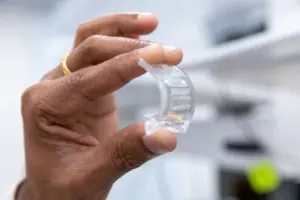The USPTO is proposing a new bar for attorneys. This creates a separate new design patent practitioner bar with more tailored educational requirements focused on design fields, while still requiring passage of the main USPTO exam and moral character evaluation. The goal is to expand the admission criteria for patent practice to encourage broader participation and align with the evolving technologies relevant to design patents. Current registered patent attorneys or agents and, future applicants who meet the existing scientific and technical requirements, would still be able to practice in all patent matters including design.
Currently, there is only one patent bar that applies to utility, plant, and design patents. The proposed design patent practitioner bar would allow individuals to practice only in design patent proceedings, not utility or plant patents.
Design patents cover the ornamental appearance of an article of manufacture. This includes aesthetic features like shape, patterns, color, etc. Design patents are issued for new, original, and ornamental designs for articles of manufacture. So, they protect the look and appearance of a product, not its function or utility. Examples of things that can be protected by design patents include furniture, lamps, jewelry, vehicles, clothing, and consumer electronics. However, design patents provide 14 years of protection from the grant date, compared to 20 years for utility patents (which can also make multiple claims whereas design patents can only make one).
To qualify for the design patent bar, applicants would need to have a bachelor’s, master’s, or PhD degree in industrial design, product design, architecture, applied arts, graphic design, fine/studio arts, art teacher education, or an equivalent degree. Applicants would also need to take and pass the existing registration exam that is currently required for the general patent bar. This covers knowledge of USPTO rules and regulations. Applicants would undergo the same moral character evaluation as required for the current patent bar. The proposed rule changes would also require design patent practitioners to indicate their limited status by placing “design” next to their signature on documents.
The new designation levels the playing field for patent practitioners with those not needing to have scientific or technical skills being able to practice without the need to meet rigorous technical standards.

